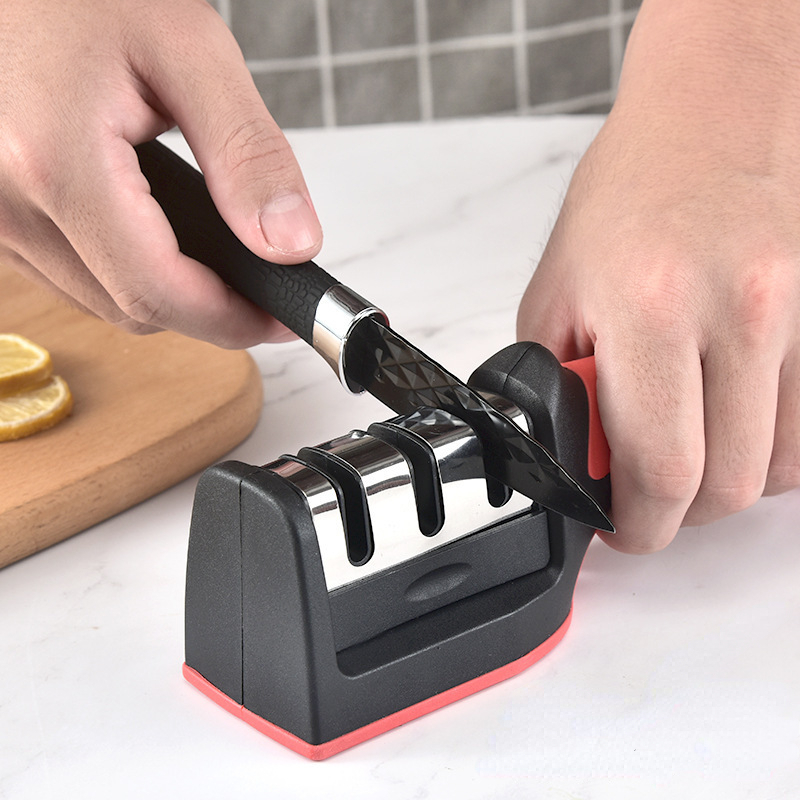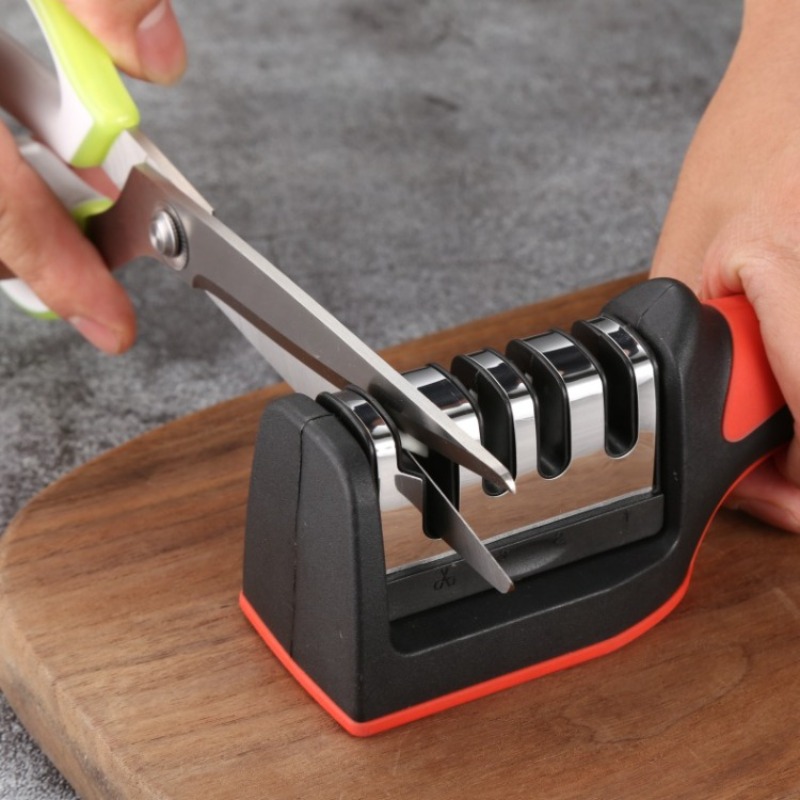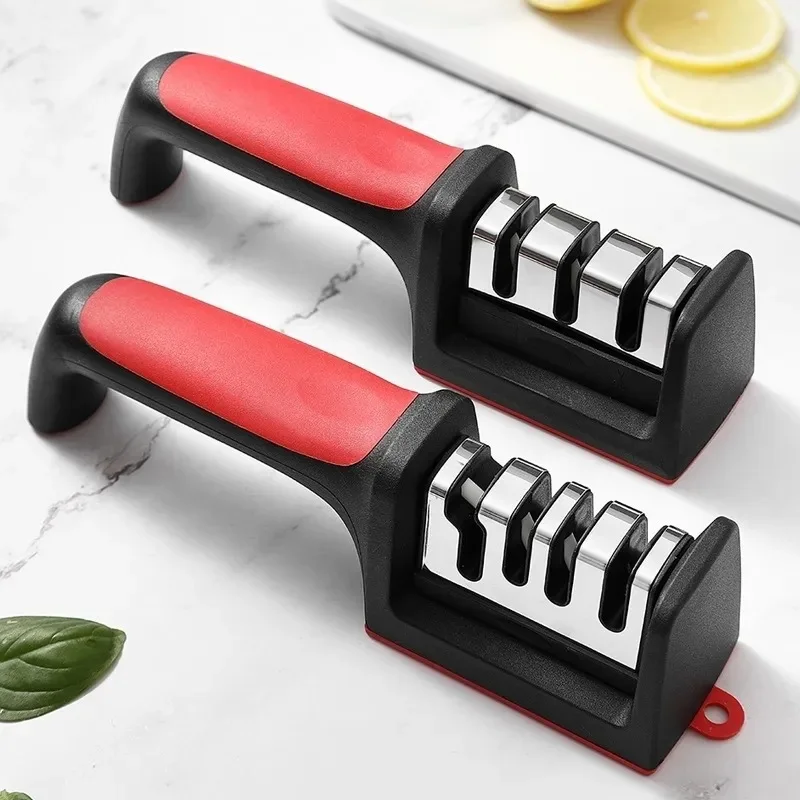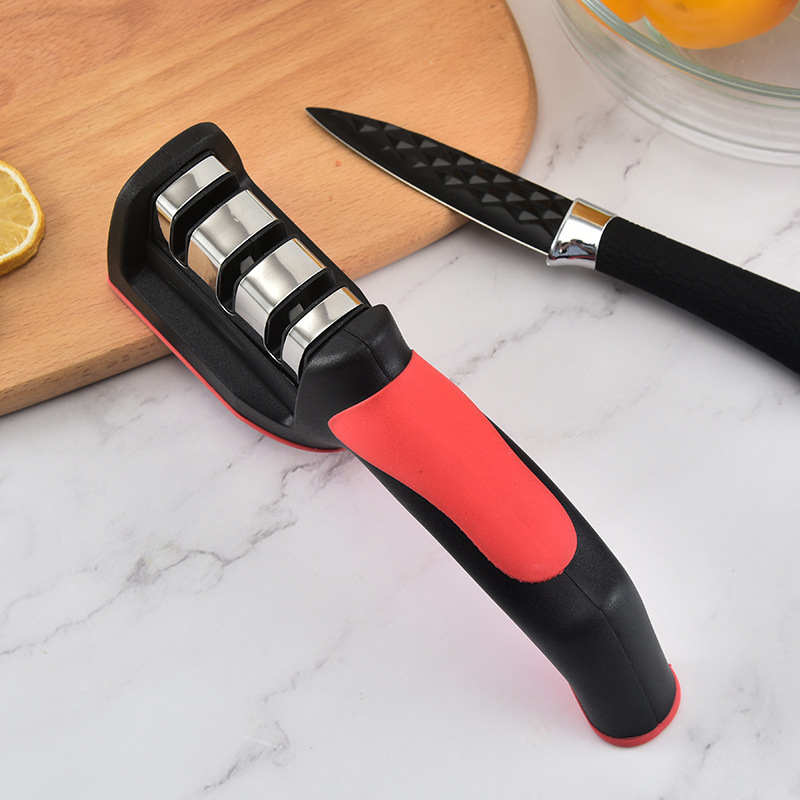Introduction
Sharpening your kitchen knife is essential for maintaining its performance and ensuring safety in your cooking. A sharp knife makes cutting, chopping, and slicing easier and more efficient. In this guide, we will explore the various methods of how to sharpen a kitchen knife, the tools you need, and tips for maintaining your knives after sharpening.

Understanding Knife Sharpness
Why Sharpness Matters
A sharp knife is safer than a dull one. When you use a dull knife, you have to apply more force to cut through food. This can lead to slips and accidents. A sharp blade glides through ingredients with minimal effort. It allows for better control, reducing the risk of injury. Additionally, a sharp knife makes prep work faster. Whether you’re chopping vegetables or slicing meat, you will spend less time struggling with the knife.
The Anatomy of a Knife
How to sharpen a kitchen knife? To sharpen your knife effectively, it’s important to understand its anatomy. A typical kitchen knife consists of several parts: the blade, edge, tip, spine, heel, and handle. The blade is the main part, which includes the edge where the cutting occurs. The edge is usually tapered to a fine point. The spine is the top, unsharpened part of the blade, while the heel is the rear part of the blade, often used for cutting tasks that require more force. Understanding these components will help you sharpen your knife correctly.
Tools for Sharpening Knives
The Essential Tools
When it comes to sharpening knives, there are several tools you can choose from. Each tool has its advantages and disadvantages. Here are some common options:
- Whetstone: A whetstone is a flat stone used to sharpen knives by grinding the blade against it. Whetstones come in different grits, ranging from coarse to fine. Coarse stones remove material quickly and are best for very dull blades. Fine stones polish the edge for a sharper finish.
- Honing Steel: This is a long, rod-like tool that helps realign the blade’s edge. It’s not technically a sharpening tool but rather a maintenance tool. Regular use of honing steel keeps the knife sharp longer between sharpenings.
- Electric Sharpener: These devices have built-in grinding wheels that sharpen the blade automatically. They can be fast and convenient, but they may remove more metal than necessary, which could shorten the knife’s lifespan.
- Manual Sharpener: These handheld sharpeners usually have two slots—one for coarse sharpening and another for fine honing. They’re easy to use but may not provide the same results as a whetstone.
Choosing the Right Tool for Your Needs
How to sharpen a kitchen knife? Choosing the right sharpening tool depends on your level of comfort and the type of knives you have. For those who are experienced or willing to learn, a whetstone offers the best results. It allows for precise sharpening and is gentle on the blade. If you’re looking for convenience, an electric sharpener or manual sharpener might be ideal. Remember that whatever tool you choose, practice is key.

How to Use a Whetstone
Preparing the Whetstone
Before you start sharpening, prepare your whetstone. Soak it in water for about 10 to 15 minutes if it’s a water stone. This process helps lubricate the stone and prevents damage to both the stone and the knife. If you use an oil stone, apply a few drops of honing oil instead.
Sharpening Techniques
Now that your stone is prepared, let’s get into the sharpening technique. Place the whetstone on a stable surface. A non-slip mat beneath it can help keep it in place. Hold the knife at a 15 to 20-degree angle against the stone. This angle is crucial for achieving a sharp edge.
Begin by pushing the blade across the whetstone, starting from the heel and moving to the tip. Apply moderate pressure as you move the knife along the stone. After completing a stroke, lift the knife off the stone and return it to the starting position. Alternate sides, sharpening one side and then the other to maintain an even edge.
Checking for Sharpness
After several strokes, check the sharpness of the knife. You can do this by cutting through a piece of paper. If the knife slices easily, you’ve done well. If not, continue sharpening until you achieve the desired sharpness. Always remember to clean the knife and the whetstone after use.
Using Honing Steel
What is Honing?
Honing is often confused with sharpening, but they serve different purposes. Honing realigns the edge of the knife, while sharpening actually removes material from the blade to create a new edge. Regular honing keeps your knife sharp longer without needing frequent sharpening.
Proper Technique for Honing
To hone your knife, hold the honing steel vertically with the tip resting on a stable surface. Hold the knife in your dominant hand at a 15 to 20-degree angle against the steel. Start with the heel of the blade at the top of the steel and pull it down toward you, applying light pressure. Repeat this motion several times on each side of the blade.
This method aligns the edge without removing much material. Make it a habit to hone your knife before each use. It will keep the blade sharp and prolong the intervals between sharpening.

Electric and Manual Sharpeners
Using an Electric Sharpener
Electric sharpeners are straightforward to use. Simply insert the knife into the designated slot and let the machine do the work. Follow the manufacturer’s instructions for the best results. Typically, you’ll run the knife through multiple times until you achieve the desired sharpness.
While electric sharpeners are convenient, they can sometimes strip too much metal away. Use them sparingly to protect your knife’s lifespan.
Manual Sharpeners: A Quick Guide
Manual sharpeners are user-friendly and portable. To use one, place the knife in the appropriate slot, usually marked for coarse or fine sharpening. Pull the knife through the slot gently but firmly. Repeat this several times on each side. Manual sharpeners are great for quick touch-ups but may not provide the same level of care as a whetstone.
Maintaining Your Knives Post-Sharpening
Cleaning Your Knives
After sharpening, cleaning your knives is essential. Use warm, soapy water to wash the blade. Avoid soaking the knife or placing it in a dishwasher, as this can damage the blade and handle. Dry the knife immediately with a soft cloth to prevent rust.
Storing Your Knives Safely
Proper storage is vital for maintaining the sharpness of your knives. Keep them in a designated knife block or magnetic strip. Avoid tossing them into a drawer, as this can dull the edges or cause damage. If you must store them in a drawer, consider using blade guards to protect the edges.
Regular Maintenance Tips
To keep your knives in good shape, make it a habit to hone them regularly and sharpen them every few months or when necessary. Pay attention to how the knife feels during use. If it seems to require more effort to cut, it’s time for sharpening. Caring for your knives ensures they remain effective and safe.
Conclusion: The Importance of Knife Care
How to sharpen a kitchen knife? Sharpening your kitchen knife is not just about keeping it sharp; it’s about enhancing your cooking experience. A well-maintained knife can make meal prep enjoyable and efficient. By understanding the tools available, practicing proper techniques, and committing to regular maintenance, you can ensure your knives remain in peak condition. With a little effort, you’ll enjoy the benefits of sharp, reliable kitchen tools for years to come.


